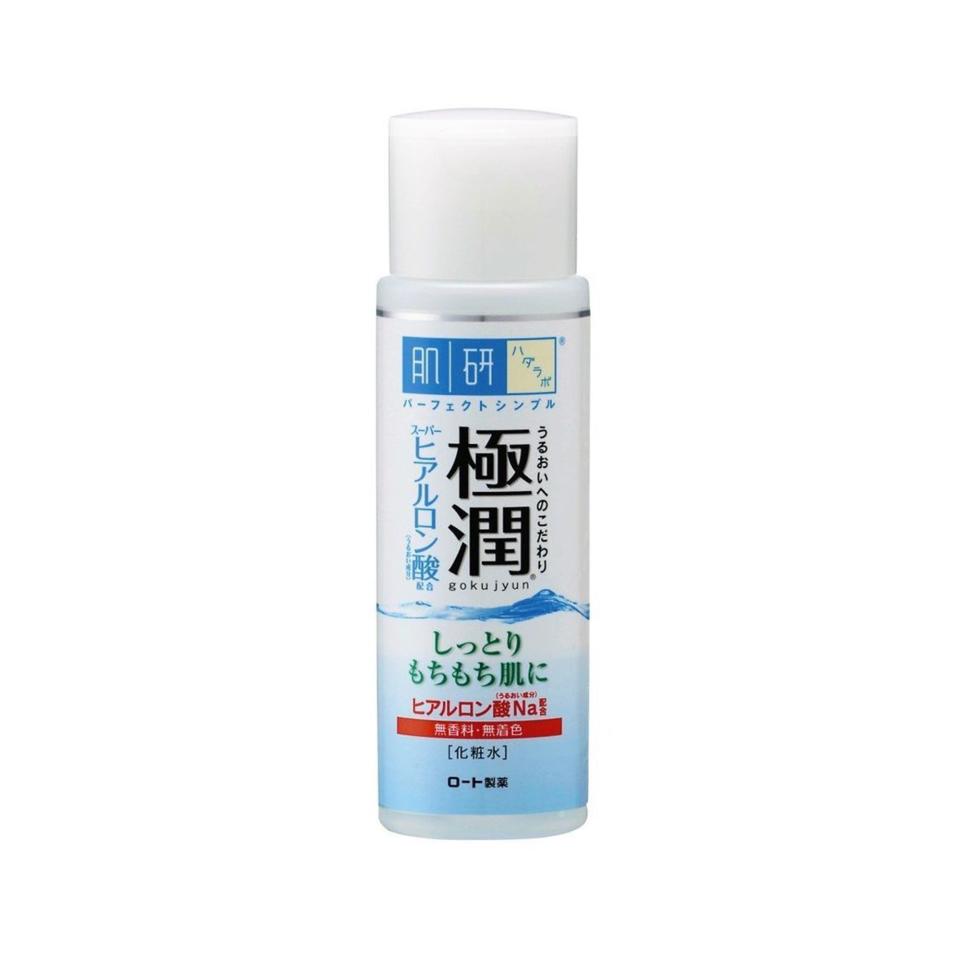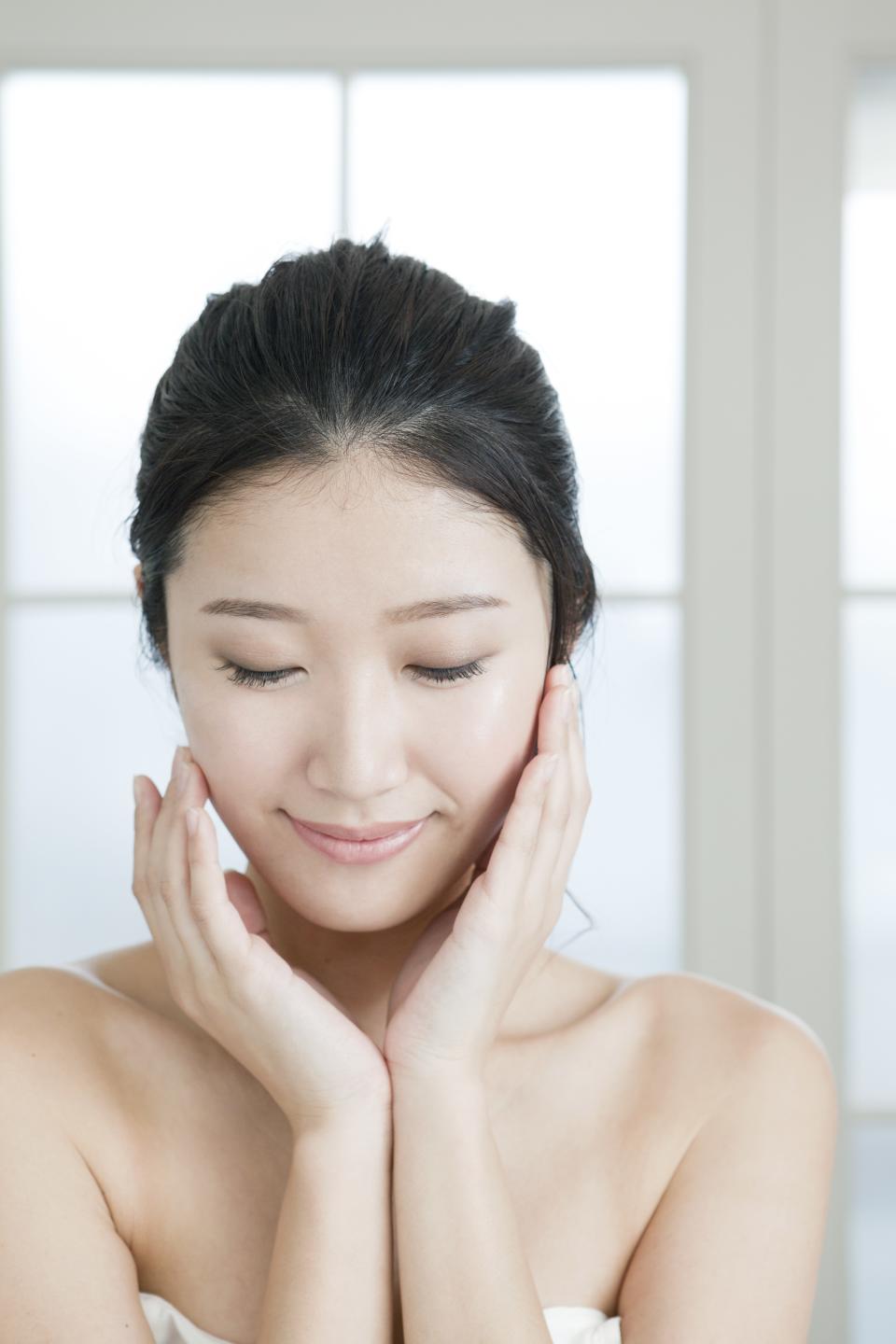What to Know About Patting, the Skin-Care Technique Beauty Lovers in Japan Swear By
The way you apply your skin-care products could spark an argument in Japan. Rubbing, which you might do without even thinking about it as you go through your morning or nighttime skin-care routine, is one of the most controversial beauty topics, as Nicole Takahashi, a Japanese beauty expert based in Tokyo, tells me. Instead, patting is preferred. "Some women in Japan are very careful not to rub their skin," she says. They go as far as refusing to use cotton pads on their faces and avoiding face wipes completely. They don't even rub their face with a towel to dry it off. Instead, they — you guessed it — pat it dry.
With J-beauty products gaining popularity in America, I tapped dermatologists and Asian skin-care experts to break down all the essentials of patting, which I've learned, is undoubtedly, the proper way to apply skin-care products.
What's with the fixation with patting?
Turns out, the simple act of rubbing in your skin-care products, especially when it comes to the eye area, can be problematic for skin. "Rubbing creates a lot of frictional forces on your skin, which can be irritating and create unnecessary inflammation around the eyes," Arash Akhavan, founder of Dermatology and Laser Group in New York City, tells Allure.
As several beauty experts tell me, patting is a standard skin-care application practice not only in Japan but also in South Korea. The technique spawned from the addition of lotion to many people's skin-care routines. "When Japanese say lotion, it's not like the milky liquid Americans call lotion," Takahashi says. Unlike the lotion you smooth all over your body, "Japanese lotion is a special step Japanese women never skip," she adds. "It's watery and helps the pH level of the skin to balance after cleansing." Some of the most popular lotions include the Hada Labo Rohto Gokujyn Hyaluronic Acid Lotion and the Sekkisei Lotion.

Lotions are a K-beauty phenomena, too. The first time I heard about lotion was from JiWoo and Somin, members of K-pop group KARD, when they visited Allure's office. They told me they pat it on after washing their faces and before putting on traditional moisturizer to help hydrate their crystal-clear skin. The Cosrx Oil-Free Ultra Moisturizing Lotion and the SMD Cosmetics Inhyunjin Emulsion are great options.
Charlotte Cho, aesthetician and co-founder of Soko Glam, also put patting and lotions on my radar. She learned about the skin-care application technique while living in Seoul. "In Korea, skin care is a lifestyle," Cho tells Allure. "Not only does what you put on your skin matter but also treating it gingerly and delicately was an essential part of the ritual."
What are the benefits?
Patting is generally gentler than rubbing in skin-care products because you minimize the chances of pulling or dragging on the skin, Alisa Kerr, another Tokyo-based Japanese beauty expert, tells Allure. "On one occasion, a Japanese skin therapist reprimanded me when she saw me apply a moisturizer with what I thought was a gently sweeping motion like a regular Western technique," she recounts. "She explained that using the patting technique was not only less damaging on the skin structure, but it also increased the absorption and effectiveness of the ingredients, as well as stimulated the blood flow giving a nice glow to the skin." Cho echoed these sentiments adding, patting "helps your products absorb quickly."
From a dermatologist's point of view, most of this thinking checks out. Shari Marchbein, a New York City-based dermatologist and clinical assistant professor of dermatology at New York University School of Medicine, says gently patting skin uses less force, so you're less likely to impose trauma on your skin. Patting won't necessarily make your skin absorb into your skin better, though. "There is no specific scientific data that supports patting products on helps them penetrate better," Marchbein adds. Instead, she says skin-care products with potent ingredients will sink into your skin no matter how you apply them.
It creates a relaxing ritual of skin-care application that becomes quite meditative and second-nature.
Regardless of medical evidence, Kerr believes patting also has a calming effect. "I am completely hooked," she says. "I find that it minimizes redness immediately after application on my sensitive skin and speeds up the absorption time. But most of all, it's really relaxing. It creates a relaxing ritual of skin-care application that becomes quite meditative and second-nature. Patting definitely prompts me to take a deep breath and relax during my morning and nighttime routine, which I love."
How does one pat?
Depending on who you ask, you're going to learn about a different patting technique. Some, like Cho, tap their hands in quick motions as they pat in their skin-care products. Others, like Takahashi, press them in with slow, palm-heavy motions.
Kerr pours a small amount of product into one of her palms before gently rubbing her hands together to evenly distribute the product. Then, she gently presses her hands against her face. "First, both hands placed vertically on either side of the nose, then horizontally over the forehead and chin," she explains.
If you don't want to waste your skin-care products by rubbing them all over your hands, Akhavan suggests putting a small amount on the tips of your index and middle finger and patting it in with quick, repetitive gentle taps "until the product seems to disappear into your skin," he says.
However, scientifically speaking, "the only place I really feel this is important is around the eyelid skin," Marchbein says. "Otherwise, the skin is thick enough to withstand a normal amount of rubbing in of products." Eyelid skin is the thinnest and most delicate of the body. For that reason, when applying any beauty products to that area, Marchbein recommends patting, specifically with your ring finger.
What type of product should be patted?
If the skin-care product has a lightweight, watery consistency like a Japanese lotion, plan to pat. This applies to toners (see the 7 Skin Method), serums, gel moisturizers, "or even the extra essence from a sheet mask," Kerr adds. Akhavan specifically points out serums. "The point of serums is to deliver an active ingredient into the deeper layers of skin, which is why they are most commonly used as the first step in your skin-care routine after cleansing your face," he says. "Well-made serums are designed with vehicles that facilitate penetration into the skin and do not require rubbing in." Noted.
For the steps of your skin-care routine with thicker consistencies, like creams and moisturizers, Cho likes to gently spread a thin layer onto her skin. Then, she taps in the remaining product on her hands into her skin.
In other words, when in doubt, pat it out. Marchbein says patting doesn't have any concrete downsides, so you might as well try out the J-beauty secret.
More on J-beauty:
6 Mascaras From Asian Beauty Brands That Make My Short Lashes Look Like Falsies
This Sold-Out Japanese Primer Is Finally Back in Stock at Sephora
Now, learn everything you need to know about jade rolling:


